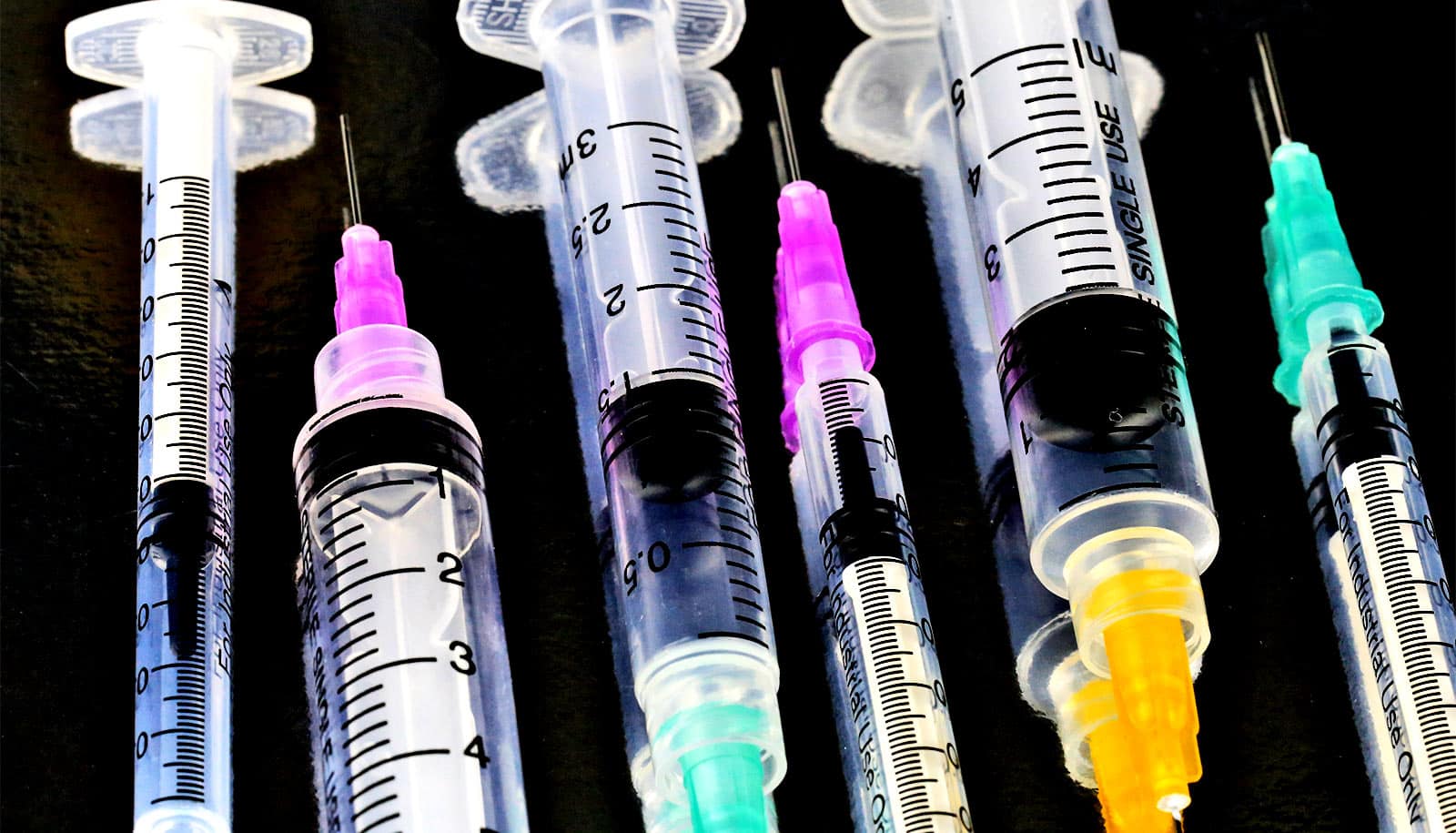Researchers have figured out how to coax effective, yet short-lasting antibodies into multiplying as a fighting force against HIV in animal models.
The work may clear a major obstacle in the development of an HIV vaccine.
“The reason we don’t have a vaccine is because the immune system doesn’t want to make the kind of antibodies that are needed to neutralize the virus,” says co-senior author Barton F. Haynes, director of the Duke University Human Vaccine Institute (DHVI). “This study is proof of concept that we can engineer the immune system to create an environment where the right antibodies can be made.”
Pinpointing the right antibodies
The researchers built on years of successive studies that identified how and when broadly neutralizing antibodies (bnAbs) arise in people with HIV infections, and what prevents the antibodies from proliferating to negate the virus.
One problem lies in the immune system, which identifies some bnAbs as a danger and actively shuts down their production. Another problem is that the neutralizing antibodies require rare changes in their genetic make-up that are infrequent during a crucial B-cell diversification process.
In the current study, the researchers traced those relevant mutations. Then they engineered an HIV protein, targeting a site called the V3 glycan region of the virus envelope, that preferentially bound to antibodies that have the unlikely but necessary mutations.
Using mouse models that express human neutralizing antibody precursors designed by co-senior author Frederick Alt, and co-first author Ming Tian of Boston Children’s Hospital, the Howard Hughes Medical Institute, and Harvard Medical School, the researchers demonstrated that their immunogen could, indeed, coax a lineage of B-cells to undergo the improbable mutations that result in broadly neutralizing antibodies.
“Our ability to make mouse models that express human broadly neutralizing antibodies has provided powerful new model systems in which we can iteratively test experimental HIV vaccines”, says Alt, who directs Boston Children’s Program in Cellular and Molecular Medicine.
A second lineage of bnAbs—binding to a different region of the virus’s outer envelope called the CD4 binding site that has long been a focus of HIV research—also went through improbable mutations. After the researchers reconstructed this antibody’s history, they developed a second immunogen. When researchers tested it in non-human primates, it similarly selected for the necessary mutations, which led to the development of potent CD4 binding-site neutralizing antibodies.
“We have identified the mutations we need, which the immune system won’t easily make, and can select for them in a vaccine that targets that mutation,” says co-lead author Kevin Saunders of the DHVI. “We have shown that we can overcome this major roadblock and can select for the right mutational changes in these bnAb precursors when they are starting to get better and better at neutralizing activity.”
A path to an HIV vaccine?
The researchers note that ongoing studies are necessary to identify additional antibodies to target as they identify and build immunogens that would constitute a vaccine.
“Without proper antigen selection it will take multiple decades of vaccination to elicit effective antibodies,” says co-lead author Kevin Wiehe of the DHVI. “We can accelerate this timeline by designing sequential immunogens that select for the required combination of functional antibody mutations.”
Haynes says the research demonstrates the intricacies of eliciting broadly neutralizing antibodies for HIV. And while an HIV vaccine still requires more work, the findings already have broader applications.
“This strategy of selecting specific antibody nucleotides by immunogen design can be applied to other infections for which vaccine development has been difficult,” Haynes says.
Additionally, he says, the insights gained from the HIV research have direct implications for cancer immunotherapies and treatments for autoimmune disorders. Both require strategies that precisely turn the immune system on or off without triggering a harmful cascade of unintended consequences.
“We have learned much about the rules of how the B-cell arm of the immune system is controlled and how to manipulate the immune system in a way that it makes the desired type of antibodies,” Haynes says.
The research appears in Science.
Additional coauthors came from Duke; Boston Children’s Hospital; Harvard Medical School; the Howard Hughes Medical Institute; the University of Kansas, Lawrence; the National Institute of Environmental Health Sciences; the 3M company; and Bioqual.
The National Institute of Allergy and Infectious Diseases, a part of the National Institutes of Health, and the Duke Translational Health Initiative funded the work.
Source: Duke University


